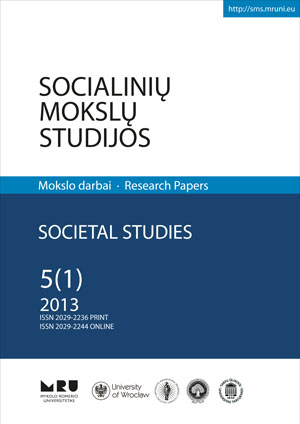Sovietinių teismų atkūrimas ir raida Lietuvoje 1944–1956 metais
The Restoration and Development of Soviet Courts in Lithuania in 1944–1956
Author(s): Dovilė SagatienėSubject(s): Social Sciences
Published by: Mykolas Romeris University
Keywords: restoration of Soviet courts; political and legal training of Soviet judges; system of Soviet courts; elections of judges
Summary/Abstract: The author of the article analyses the restoration and development of Soviet courts in Lithuania from the beginning of the reoccupation in 1944, till 1956, when the cult of Stalin’s person was officially condemned by the Communist party. The author discusses the formation of the Soviet court system and the changes to this system after World War 2, the staff of the Soviet judiciary body from 1944 till the first judge elections in 1949 and the legitimization of Soviet courts in subsequent elections in 1951 and 1954. The article also reveals the peculiarities of judicial body formed in 1944–1956, revealing the lack of judges and the reasons for this situation, showing the process of political and legal training of judges. Before the first court elections in 1949, the Soviet court system was established in the absence of societal participation. Officially the formation of the peoples’ courts was delegated to the local authorities and the formation of the Supreme Court—to the Supreme Council of the LSSR. However, de facto, the body of Soviet judiciary in 1944–1949 was formed not by the local authorities or the Supreme Council of the LSSR, but by the Ministry of Justice, which, after selecting candidates, coordinated the candidates with the Communist Party’s Staff department and only after that submitted candidates to the local authorities or to the Supreme Council of the LSSR for approval. The new order of the elections of the peoples’ courts, adopted in 1948, did not change basically the former elections practice. After the elections in 1949, 1951 and 1954 the massive and unanimous participation of society was stated, but in reality neither positive, nor negative voting results had an impact on the court formation. Forming the body of Soviet judges during the first years of the reoccupation was challenging, because of the low number of reliable judges which was attempted to reduce by political and legal training in legal classes and in special institutions of legal education. But the demand of legally educated and politically reliable judges was much higher than was possible to prepare in short time, therefore, in 1944–1956 randomly selected individuals of questionable reputation sometimes became judges, by whom not only the Soviet judiciary system, but the Communist regime as a whole, could be discredited. Therefore, in 1946 the Communist Party implemented the Decree which reformed legal and political education of judiciary officers. After this initiative, the training of legal officers and the results of political and legal education started slowly to improve.
Journal: Socialinių mokslų studijos
- Issue Year: 5/2013
- Issue No: 1
- Page Range: 193-213
- Page Count: 22
- Language: Lithuanian

